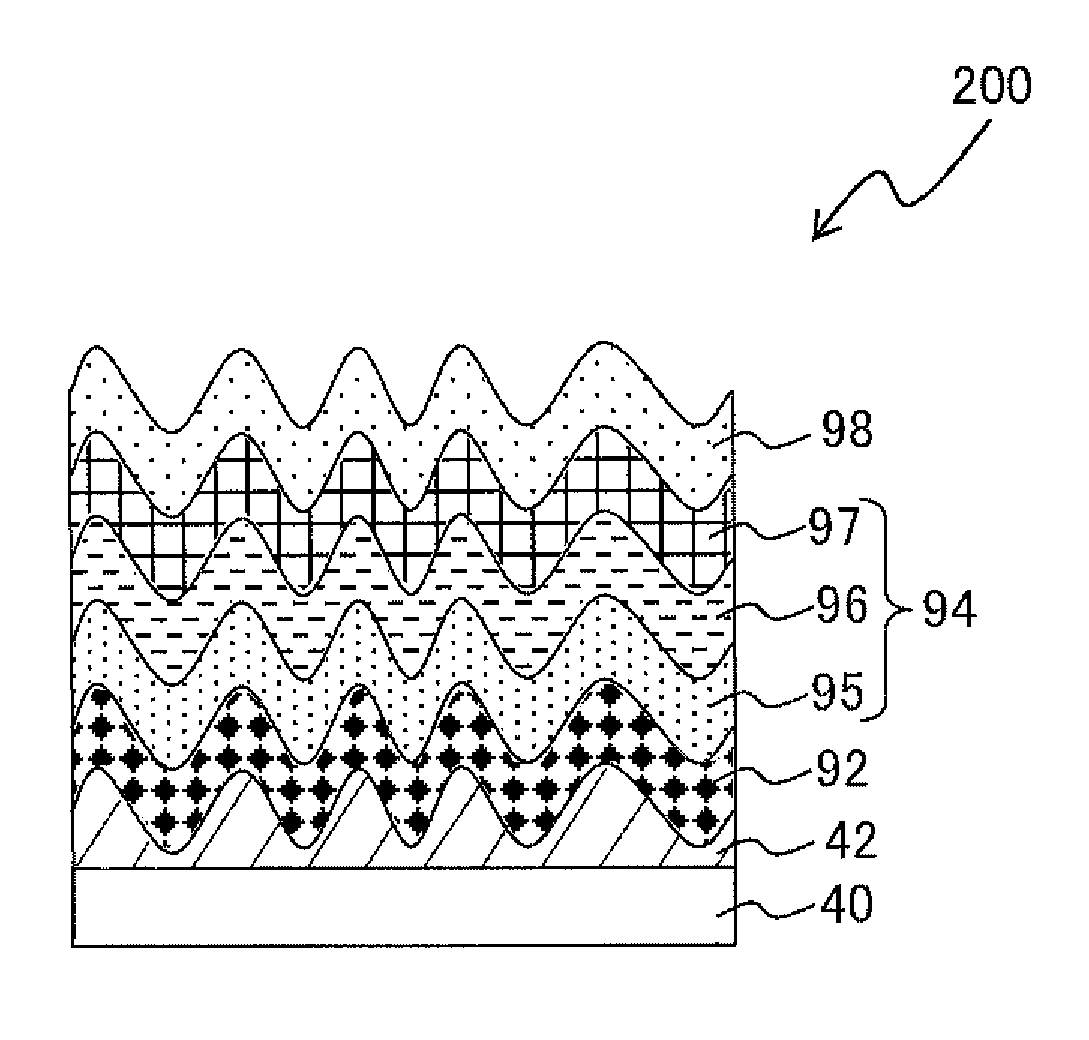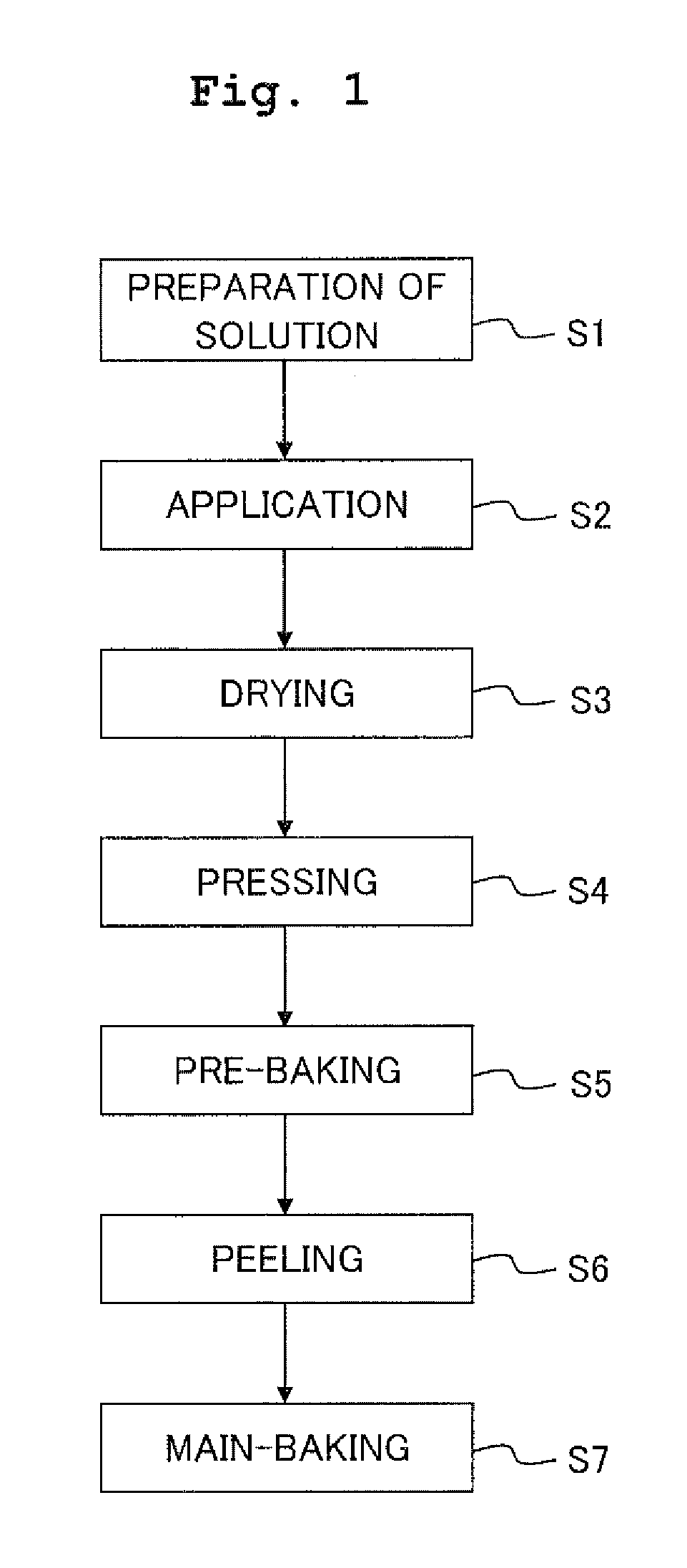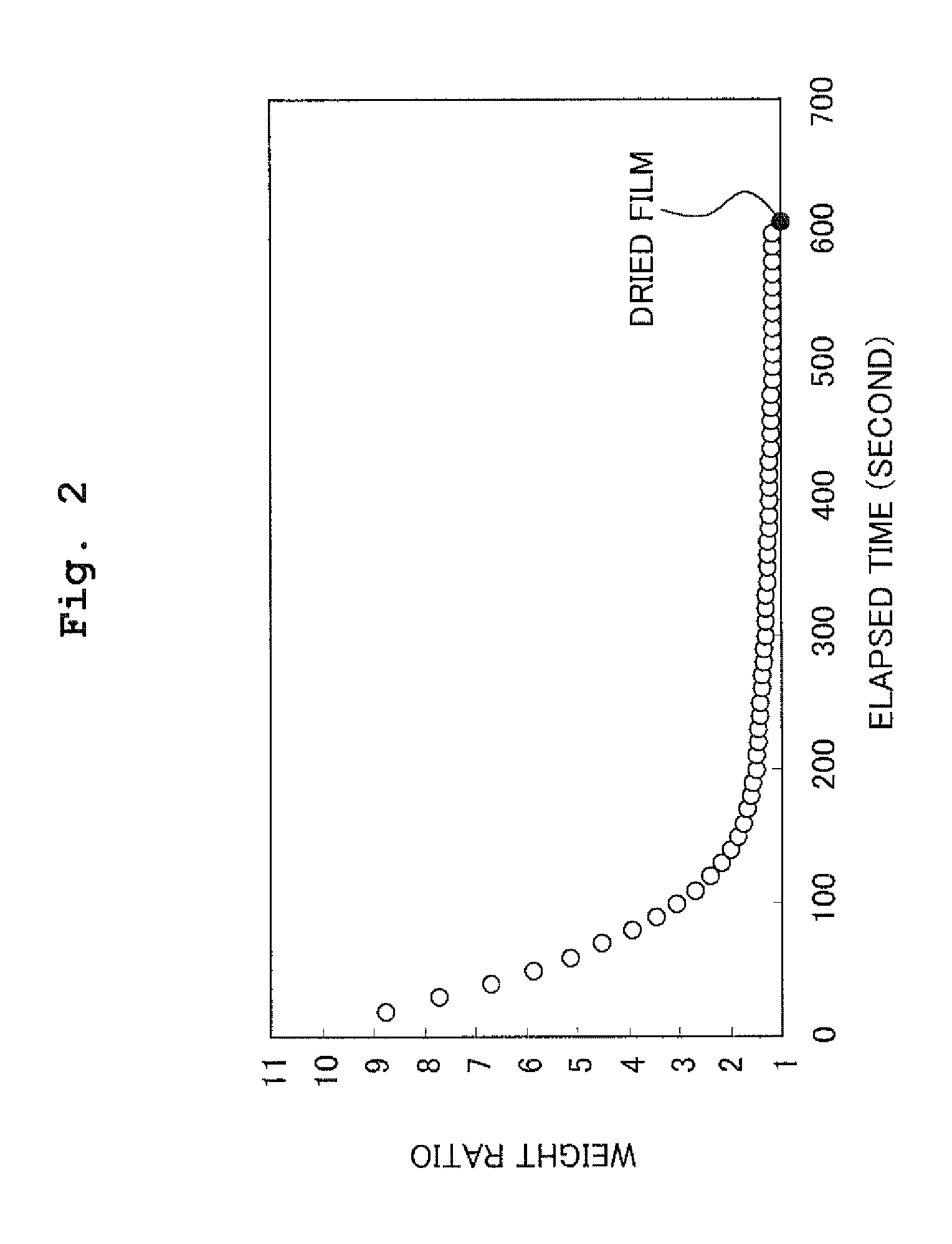Method for producing concave-convex substrate using sol-gel method, sol used in same, method for producing organic EL element using same, and organic EL element obtained thereby
a technology of concave and convex substrates, which is applied in the direction of electric lighting sources, solid-state devices, and short-wavelength light sources, can solve the problems of difficult development of light sources, difficulty in technical and economic aspects, and high cost of short-wavelength light sources, and achieves large area, high yield, and reliable transfer of concave and convex patterns.
- Summary
- Abstract
- Description
- Claims
- Application Information
AI Technical Summary
Benefits of technology
Problems solved by technology
Method used
Image
Examples
example 1
[0089]2.5 g of tetraethoxysilane (TEOS) and 2.1 g of methyltriethoxysilane (MTES) were added by drops to a mixture of 24.3 g of ethanol, 2.16 g of water, and 0.0094 g of concentrated hydrochloric acid, followed by being stirred for 2 hours at a temperature of 23 degrees Celsius and humidity of 45% to obtain a sol. The sol was applied on a soda-lime glass plate of 15×15×0.11 cm by a bar coating. Doctor Blade (manufactured by Yoshimitsu Seiki Co., Ltd.) was used as a bar coater. The doctor blade was designed so that the film thickness of the coating film was 5 μm. However, the doctor blade was adjusted so that the film thickness of the coating film was 40 μm by sticking an imide tape having a thickness of 35 μm to the doctor blade. The weight of the glass plate (glass substrate) after the bar coating was weighed every time when a predetermined period of time elapses by use of an electric weighing machine (produced by Kensei Industry Co., Ltd., electromagnetic weighing machine “GH-202”...
example 2
[0097]A sol was prepared in the same manner as Example 1, except that 31.7 g of isopropyl alcohol (IPA) was used instead of ethanol used in the sol. A spin coating method was used as the method for applying the sol other than the bar coating method. The spin coating was performed at a spin speed of 500 rpm for 8 seconds, and then performed at a spin speed of 1000 rpm for 3 seconds. The weight of the glass substrate was weighed for each elapsed time after the spin coating in the same manner as Example 1. Then, it was obtained the ratio of weight of the glass substrate to the weight (dried weight) of the substrate, the dried weight being obtained by heating the substrate at a temperature of 100 degrees Celsius for 5 minutes. FIG. 15 shows the variation of the ratio (e=b(t) / a) of weight of the coating film to the dried weight of the coating film for each elapsed time after the spin coating. Subsequently, the mold was pressed against the coating film of the sol, which was obtained by pe...
example 3
[0100]In this Example, a mold having a concave and convex surface was produced by using the BCP method, and then a diffraction grating and an organic EL element including the diffraction grating were produced using the produced mold and the pressing roll used in Example 1. At first, it was prepared a block copolymer produced by Polymer Source Inc., which was made of polystyrene (hereinafter referred to as “PS” in an abbreviated manner as appropriate) and polymethyl methacrylate (hereinafter referred to as “PMMA” in an abbreviated manner as appropriate) as described below.[0101]Mn of PS segment=868,000[0102]Mn of PMMA segment=857,000[0103]Mn of block copolymer=1,725,000[0104]Volume ratio between PS segment and PMMA segment (PS:PMMA)=53:47[0105]Molecular weight distribution (Mw / Mn)=1.30[0106]Tg of PS segment=96 degrees Celsius[0107]Tg of PMMA segment=110 degrees Celsius
[0108]The volume ratio of the first polymer segment and second polymer segment (the first polymer segment:the second ...
PUM
| Property | Measurement | Unit |
|---|---|---|
| temperature | aaaaa | aaaaa |
| temperatures | aaaaa | aaaaa |
| height | aaaaa | aaaaa |
Abstract
Description
Claims
Application Information
 Login to View More
Login to View More - R&D
- Intellectual Property
- Life Sciences
- Materials
- Tech Scout
- Unparalleled Data Quality
- Higher Quality Content
- 60% Fewer Hallucinations
Browse by: Latest US Patents, China's latest patents, Technical Efficacy Thesaurus, Application Domain, Technology Topic, Popular Technical Reports.
© 2025 PatSnap. All rights reserved.Legal|Privacy policy|Modern Slavery Act Transparency Statement|Sitemap|About US| Contact US: help@patsnap.com



